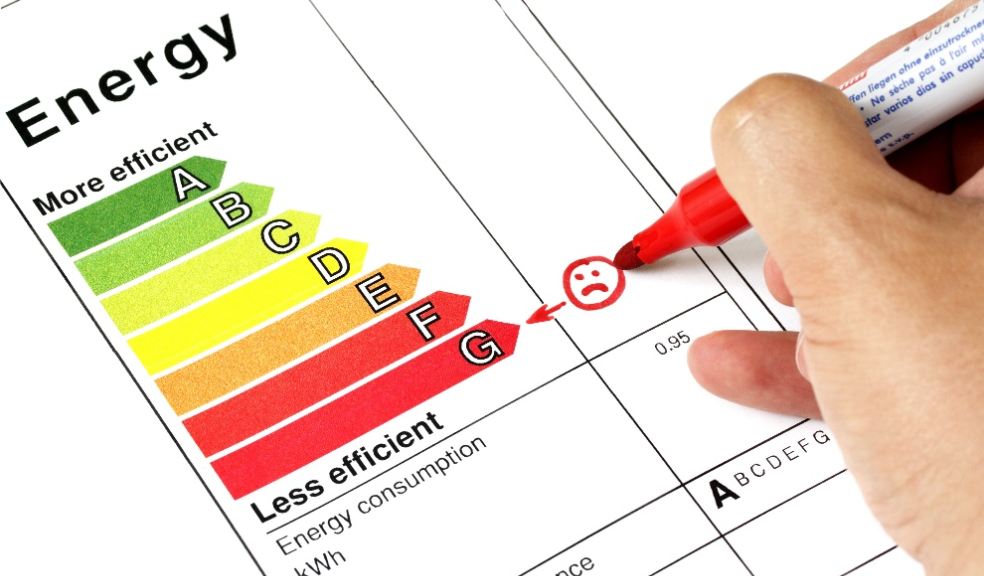
Revealed: Over half of homes in the South West have an EPC rating of 'D' or below
In the South West, 59% of homes have an EPC rating of D - G, meaning owners and landlords would have to spend up to £31k to improve it to the pending government requirements.
Data summary:
-
With 64% of all homes being between D - G on their EPC rating, Yorkshire and the Humber has the least energy-efficient homes in the country.
-
London has the best average EPC rating per home, with just over half (53%) of all residential properties in the capital having between D - G.
-
The average cost to bring a home from an energy efficiency rating of G up to a C - A would cost around £31,000 (property size dependent).
According to Government data, 2022’s winter energy bills averaged 96% higher than the previous year. As such, it has never been more expensive to heat a home, regardless of if the property uses gas or electric heating methods.
Legislative changes regarding Energy Performance Certificates (EPC) are set to come into force soon, too. Under current government proposals, by 2025 all new lettings will require a rating of C or above. The same rule will apply to continuing tenancies from 2028.
JF Heating has conducted research to see which of England’s regions has the highest percentage of homes with a poor EPC energy efficiency ratings (from grade D to G). They did this by analysing the UK Government’s home EPC database, taking the quantity of homes per region and their listed EPC ratings. Then, they calculated the percentage difference in figures.
The regions in England with the worst-to-best EPC ratings
| Region | Number of lodgements (homes) | Percentage of properties (D - G rating) |
| Yorkshire and the Humber | 2,336,853 | 64% |
| West Midlands | 2,324,927 | 62% |
| East Midlands | 2,015,508 | 60% |
| North West | 3,177,718 | 60% |
| South West | 2,427,620 | 59% |
| North East | 1,221,294 | 58% |
| East of England | 2,525,561 | 56% |
| South East | 3,777,354 | 56% |
| London | 3,796,720 | 53% |
| Unknown | 10,643 | n/a |
The data revealed that those living in Yorkshire and the Humber have, on average, the worst homes for energy efficiency in all of England. Just over a third (36%) of the homes are EPC rated A - C, meaning 64% of homes are energy inefficient.
In the West Midlands, of the 2.3 million homes, 62% do not meet Government targets for energy efficiency, the second worst result in the country. Closely following behind is the neighbouring East Midlands, with 60% of homes not hitting EPC targets. This result is shared with those in the North West, also at 60%.
London has by far the highest quantity of homes with an EPC rating of A - C at 47%, with just over half (53%) falling into the D - G category. The high volume of new flats in London, built to the Government’s EPC recommendations, helps boost the region’s standings.
How much does it cost to improve a home’s EPC energy efficiency ratings?
Just because a home gets a poor EPC rating, it doesn’t mean that can’t be changed. Improvements such as home insulation, double/triple glazing and investing in renewable energy sources for the property can drive down your winter bills cost.
| Home improvement action | Costs per sector | Average combined costs |
| Upgrade lighting to LED light bulbs | £100 | £100 |
| Insulate roof | £500 | £1,100 for both |
| Insulate walls | £610 | |
| Installing double or triple glazed windows | 2 bed house: £2,500-£3,500 | £3,000 |
| 3 bed house: £3,500-£5,000 | £4,250 | |
| 4 bed house: £6,000-£7,500 | £6,570 | |
| Energy-efficient boiler upgrade | £1,800-£3,200 | £2,500 |
| Install underfloor heating | £4,000-£4,500 | £4,250 |
| Invest in renewable energy | £2,000-£18,000 | £10,000 |
| Overall average combined cost: | £31,225 | |
To take a home with an EPC rating of G to a C could cost homeowners up to £31,225. However, this is dependent on the size of the property and the cost of raw materials.
Notable upgrade costs include investing in renewable energy projects on the property, such as installing solar panels, at an average cost of £10,000. Underfloor heating installation comes in at just over £4,000, whilst changing from incandescent light bulbs to LEDs costs just £100.
James Farquharson, Director at JF Heating, said: "Families up and down the country have been feeling the pinch in 2023, with budgets tighter than ever. Exorbitant energy bills will cause undue stress to those struggling with heating their homes, but it doesn’t have to be this way. Improving the EPC rating of a property can save you money on each and every energy bill going forwards.
"Alongside the basics of keeping doors and windows closed during winter, consider fitting something like a smart meter, to help with monitoring your energy usage. Couple that with some small home improvements, such as insulation or double glazing, and you’ll start to reap the rewards during the winter months. Not only will your house feel warmer, but you’ll be saving money too."













